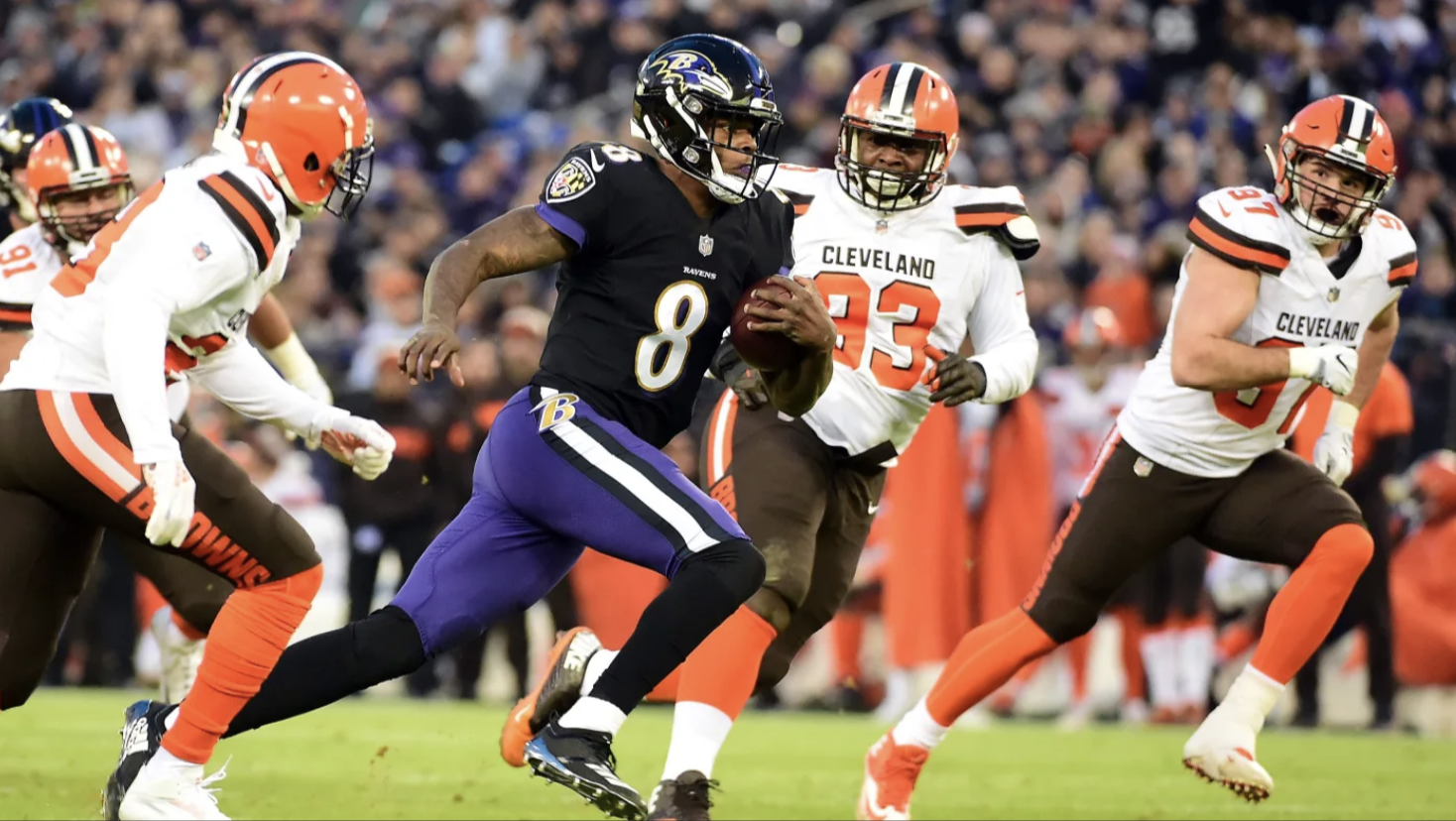“When we talk about people of color, we use some words and phrases more than others. This tendency is everywhere in sports journalism, so much so that an algorithm can predict the race of an athlete based on the words used in an article. Racialization goes deeper than words.”
— Kelly E. Wright
Why do we see the Myles Garrett incident as ‘criminal’?
Cleveland Browns defensive end Myles Garrett (right) reacts after swinging a helmet at Pittsburgh Steelers quarterback Mason Rudolph (left) in the fourth quarter of an NFL football game Nov. 14 in Cleveland. The Browns won 21-7.
While the incident that occurred was clearly an unjustified act of violence, the response by viewers of this game was overwhelmingly alarming. This altercation resulted in players, reporters, and fans—beyond the Pittsburgh Steelers’ fandom—ruthlessly indicting Myles Garrett for his behavior. Garrett was even called a criminal for his unsavory conduct. The sociolinguistic lens applied to this situation does not aim to absolve Garrett of his sins, however, it works to provide an insight into why Garrett’s ultimately “terrible mistake” was semantically, and inaccurately deemed a massive brawl and an assault. These words are linguistically not synonymous with the facts of the altercation. Etymologically, a brawl necessitates multiple, noisy fights going on at once, for an extended period of time. And, etymologically, an assault is defined as an onset or rush upon any one with hostile intent; an attack with weapons. The choices of phrasing here are no coincidence, and they stem from the ways our beliefs about people interact with how we use language. Stereotypes help pattern the types of words we use to describe people and their actions. It is no secret that a criminal stereotype follows black people like a specter, and one look at who gets called a thug is a good illustration of that. This is a clear example of racialization in mainstream sports media.
More in the Media
I found this section difficult to compress into a couple examples. When I think about the list of black athletes who face harmful stereotyping due to the media’s portrayal of them, the list goes on and on. To name a few, I have pictured them below. The way in which the media consistently depicts Black athletes as either formidable threats to their sport or exhibiting the idea of the Myth of Unbeatable Black Athleticism, perpetuates a culture that makes audiences perceive them as such. This is once again, why I believe applying a sociolinguistic lens to broadcast sport journalism and print media will help to eradicate these unjustified stereotypes placed upon Black athletes, and all athletes of color.
-

Tiger Woods
-

Sha'Carri Richardson
-

Colin Kaepernick
-

Lebron James
-

Serena Williams
-

Lamar Jackson
The Black Quarterback vs The White Quarterback
This photograph is from an article written about the evolution of the quarterback position, entitled “Tom Brady vs. Lamar Jackson: Snatching the torch from the GOAT: Jackson epitomizes the evolution of the NFL quarterback,” implying a sort of ownership of the quarterback position as a historically white role.
The article heralds both Tom Brady and Lamar Jackson as being masters of their craft, however, it is riddled with historical constructions of the quarterback position as belonging to the White athlete. Jackson compares favorably with Brady when you look at their numbers through their first 14 career starts.
Their stat lines provided by ESPN Stats & Information:
Brady: 11-3, 64.3 completion percentage 18 touchdowns, 12 interceptions and an 87.0 NFL passer rating.
Jackson: 11-3, 61.1 completion percentage 16 touchdowns, eight interceptions and an 89.3 NFL passer rating.
In the 2019 NFL season, Jackson is on pace to finish the season with more than 3,700 passing yards and 1,300 rushing yards — a feat that no NFL player has accomplished.
Instead of the analysis of the skills of these two athletes ending here, there is a discussion of race.
Author William C. Rhoden states, “Over the years, I’ve predicted a revolution that would result in black quarterbacks — held at bay for so long — taking over and transforming the position. The catalysts for my optimism were Randall Cunningham, who played in the NFL from 1985-2001, and Michael Vick, who played from 2001-2006 and 2009 until 2015.” Now this revolution of the quarterback position is great, but it implies linguistically that Black athletes have to reclaim this historically White-dominated space. The media constructs this position as one requiring high intellectual capacity, strategy, and leadership; terms often associated with White athletes. Black athletes are then defined in binary opposition.
This article serves as yet another view of how the media constructs stereotypes about Black Athletes as they are defined in binary opposition to their White counterparts. The media worked to exclude Black athletes from being considered as worthy candidates of the quarterback position. This, too, is a clear example of racialization in mainstream sports media.
Listen Up
For more information on this study and its results, check out this podcast starring Kelly E. Wright:






